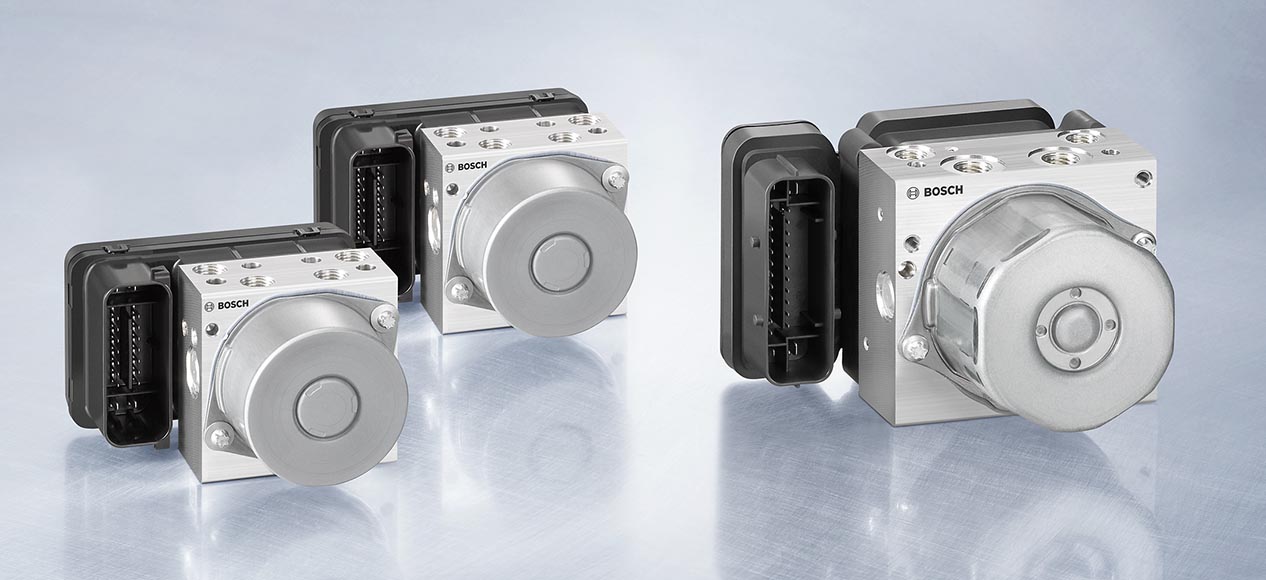Motorcycle anti-lock braking systems have been around since 1988 and the development of the way they work has seen a constant series of improvements over the years.
Since 2016 it has been compulsory for all motorcycles over 125cc to be fitted with Anti-lock Braking Systems (ABS).
The first ABS systems were offered by BMW in 1988 as an option on the K100 series of motorcycles and back then, these newly introduced anti-lock developments were heavy, bulky and, by comparison to today’s equivalent, crude. That said, they did still work effectively to stop the wheels locking under hard braking.
Back in 1988 these ABS systems weighed as much as 11kg, but that is now reduced to 450g with the latest developments from market-leaders Bosch. The global giant has dominated in the development of ABS and other integrated motorcycle safety systems and now offers the widest selection on the market.
Rider perception of these systems has changed hugely over the past 10 to 15 years too. While once riders would have actively not wanted ABS fitted to their motorcycle, new buyers these days, even before the fitment of ABS became mandatory, were keen to have it on their bike.
The reasons behind this are because the modern systems work so effectively. It is only on a race track, in the hands of highly skilled riders, where the limitations of modern road-developed ABS systems might be found.
For those riding on the roads, having an ABS safety net, especially when backed up by traction control and other rider safety aids, can actively help reduce accidents.
How does ABS actually work?
Motorcycle ABS works to stop the wheels locking thanks to wheel speed sensors that detect the rate the wheels are spinning. These sensors relay the rotational speed of the wheel and detect if the wheel has stopped rotating, sending a signal to the bike’s ECU.
The ECU determines if the wheel deceleration falls outside of predetermined limits, and if this is leading to a locked wheel. The ECU then tells the ABS control unit to ‘pulse’ and reduce the hydraulic pressure of the braking system.
When the ABS systems were first introduced the ‘pulsing’ was controlled by pistons but in recent years electronic controls have handed this to solenoid valves which can be more accurately controlled.
This pulsing sensation works to constantly grab and let go of the brake disc for the wheel to not lock but the maximum available braking force to be applied. This is particularly useful on motorcycles in emergency ‘panic braking’ scenarios which without ABS can easily result in a locking of the wheel, complete loss of traction and the bike crashing.
When ABS was first introduced back in the late 1980s the ABS systems were designed around those even earlier systems built for cars and the delay between the introduction on cars and later on bikes was due to waiting for the downsizing of various components to fit on motorcycles. This pulsing sensation under hard braking was off-putting for some bikers, who would sometimes claim that they would be able to stop more quickly in an emergency without the intervention.
In the past 10 years, motorcycle ABS development – along with the advancement of other safety system like traction control and anti-wheelie systems – has been done solely with motorcycles in mind.
The size and weight of the ABS control units has been reduced by a factor of 10 times; the latest Bosch systems weigh significantly less than 1kg and they work far more effectively when added to the very latest tyre and brake developments too. The pulsing sensation of electronic intervention is much less intrusive as well.
The most recent ABS development has seen the introduction of cornering ABS which allows the bike to brake while remaining under control for the rider.
The way the ABS systems control this is very complex and has only been recently made possible thanks to the ever-smaller computer control and more powerful computing power available.
Any rider who has applied the brakes mid-corner will tell you the motorcycle or scooter tends to ‘sit-up’ and run straight ahead. Brake any harder and the front wheel will lock, the bike will tip over and (unless you have the skills of MotoGP star Marc Marquez) almost certainly crash in what’s referred to as a ‘lowside’.
If the same over-braking force is applied to the back brake, the bike will lock up and likely slide sideways and tip the rider off over the ‘highside’ and the rear wheel attempts to overtake the front. The other outcome is the bike slides out of control from the rear. Any of these three scenarios means the bike has crashed and Bosch reckons 50% of motorcycle crashes occur on bends in the road.
The Bosch eCBS system (electronic Combined Braking System) works to dish out the brake force being applied by the bike in a corner so neither wheel locks. This is effectively the same way traction control works but in reverse.
Despite all the advances made with ABS and cornering ABS, nothing can change the laws of physics. Motorcycles and scooters can still be crashed, and they can only stop within the limits of the available grip.



